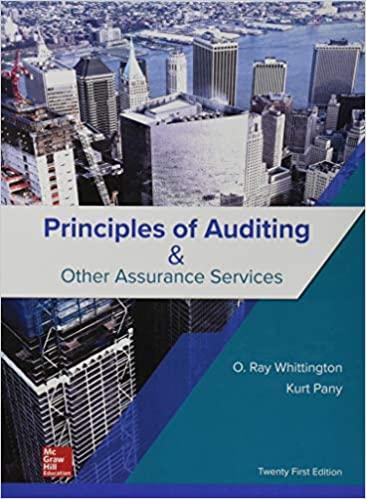Question
Issuing Bonds at a Premium On the first day of the fiscal year, a company issues a $1,500,000, 12%, 7-year bond that pays semiannual interest
Issuing Bonds at a Premium
On the first day of the fiscal year, a company issues a $1,500,000, 12%, 7-year bond that pays semiannual interest of $90,000 ($1,500,000 12% ), receiving cash of $1,571,922.
Journalize the bond issuance. If an amount box does not require an entry, leave it blank.
| blank | Accounts PayableBonds PayableCashDiscount on Bonds PayablePremium on Bonds PayableCash | Cash | Cash |
| Accounts PayableCashDiscount on Bonds PayableInterest PayablePremium on Bonds PayablePremium on Bonds Payable | Premium on Bonds Payable | Premium on Bonds Payable | |
| Accounts PayableBonds PayableCashDiscount on Bonds PayableInterest PayableBonds Payable | Bonds Payable | Bonds Payable |
Feedback Area
Feedback
Bonds Payable is always recorded at face value. Any difference in issue price is reflected in a premium or discount account.
Rodgers Corporation produces and sells football equipment. On July 1, Year 1, Rodgers Corporation issued $80,500,000 of 10-year, 14% bonds at a market (effective) interest rate of 13%, receiving cash of $84,935,204. Interest on the bonds is payable semiannually on December 31 and June 30. The fiscal year of the company is the calendar year.
Required:
For all journal entries, If an amount box does not require an entry, leave it blank.
Question Content Area
1. Journalize the entry to record the amount of cash proceeds from the issuance of the bonds on July 1, Year 1.
| blank | Bonds PayableCashDiscount on Bonds PayableInterest ExpensePremium on Bonds PayableCash | Cash | Cash |
| Accounts PayableCashDiscount on Bonds PayableInterest ExpensePremium on Bonds PayablePremium on Bonds Payable | Premium on Bonds Payable | Premium on Bonds Payable | |
| Accounts PayableBonds PayableCashDiscount on Bonds PayableInterest ExpenseBonds Payable | Bonds Payable | Bonds Payable |
Feedback Area
Feedback
Bonds Payable is always recorded at face value. Any difference in issue price is reflected in a premium or discount account.
Question Content Area
2. Journalize the entries to record the following:
a. The first semiannual interest payment on December 31, Year 1, and the amortization of the bond premium, using the straight-line method. Round to the nearest dollar.
| blank | Bonds PayableCashDiscount on Bonds PayableInterest ExpenseInterest ReceivableDiscount on Bonds Payable | Discount on Bonds Payable | Discount on Bonds Payable |
| Bonds PayableCashDiscount on Bonds PayableInterest ReceivablePremium on Bonds PayablePremium on Bonds Payable | Premium on Bonds Payable | Premium on Bonds Payable | |
| Bonds PayableCashDiscount on Bonds PayableInterest ExpensePremium on Bonds PayableCash | Cash | Cash |
Feedback Area
Feedback
Bonds Payable is always recorded at face value. Any difference in issue price is reflected in a premium or discount account.
The straight-line method of amortization provides equal amounts of amortization over the life of the bond.
Question Content Area
b. The interest payment on June 30, Year 2, and the amortization of the bond premium, using the straight-line method. Round to the nearest dollar.
| blank | Bonds PayableCashDiscount on Bonds PayableInterest ExpenseInterest ReceivableInterest Expense | Interest Expense | Interest Expense |
| Bonds PayableCashDiscount on Bonds PayableInterest ReceivablePremium on Bonds PayablePremium on Bonds Payable | Premium on Bonds Payable | Premium on Bonds Payable | |
| Bonds PayableCashDiscount on Bonds PayableInterest ExpensePremium on Bonds PayableCash | Cash | Cash |
Feedback Area
Feedback
Bonds Payable is always recorded at face value. Any difference in issue price is reflected in a premium or discount account.
The straight-line method of amortization provides equal amounts of amortization over the life of the bond.
Question Content Area
3. Determine the total interest expense for Year 1. Round to the nearest dollar. $fill in the blank 705369fb0f87fda_1
4. Will the bond proceeds always be greater than the face amount of the bonds when the contract rate is greater than the market rate of interest?
YesNoYes
5. Compute the price of $84,935,204 received for the bonds by using Present value at compound interest, and Present value of an annuity. Round to the nearest dollar. Your total may vary slightly from the price given due to rounding differences.
| Present value of the face amount | $fill in the blank 705369fb0f87fda_3 |
| Present value of the semiannual interest payments | fill in the blank 705369fb0f87fda_4 |
| Price received for the bonds | $fill in the blank 705369fb0f87fda_5 |
Feedback Area
Feedback
Remember, the selling price of a bond is the sum of the present values of the face amount of the bonds due at the maturity date and the periodic interest to be paid on the bonds.
Feedback Area
Feedback
Partially correct
Step by Step Solution
There are 3 Steps involved in it
Step: 1

Get Instant Access to Expert-Tailored Solutions
See step-by-step solutions with expert insights and AI powered tools for academic success
Step: 2

Step: 3

Ace Your Homework with AI
Get the answers you need in no time with our AI-driven, step-by-step assistance
Get Started


